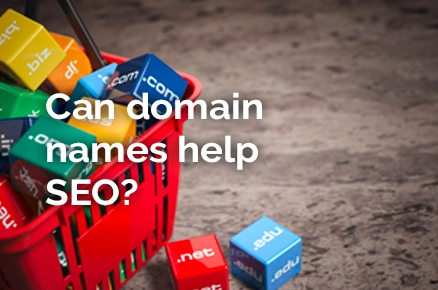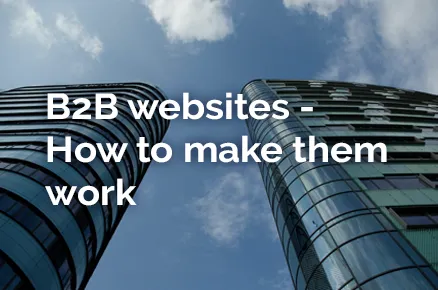Should you invest in a website refresh or redesign?
A business should invest in a website redesign or website update when their website no longer meets their needs or the needs of their target audience.
Here are some factors to consider when deciding between a website redesign or website update:
Website Redesign:
Outdated design:
If a website looks outdated or unprofessional, it may be time for a complete redesign to give the website a modern, visually appealing design that accurately represents the business.
Poor user experience:
If a website is difficult to navigate, has slow load times, or is not mobile-friendly, a complete redesign may be necessary to improve the user experience.
Major changes in the business:
If a business has undergone major changes in branding, products, or services, a complete redesign may be necessary to reflect those changes and ensure the website accurately represents the business.
Rebranding:
If a business is undergoing a rebranding effort, a complete redesign may be necessary to align the website with the new brand identity.
Website Update:
Minor changes in design:
If a website has a generally modern design, but needs minor updates to improve the user experience or reflect minor changes in the business, a website update may be sufficient.
Content updates:
If a website has outdated or inaccurate content, a website update may be necessary to ensure the website provides accurate and up-to-date information.
Technical updates:
If a website has technical issues or is not compatible with the latest web browsers or devices, a website update may be necessary to ensure the website is functional and accessible.
SEO updates:
If a website is not ranking well in search engine results, a website update may be necessary to improve search engine optimisation (SEO).
More detail:
Outdated Design:
If your website design looks dated and fails to reflect your brand image or industry trends, it may be time for a redesign.
An aesthetically appealing and modern design helps create a positive impression and engages users effectively.
Poor User Experience (UX):
Evaluate how users interact with your website.
If they struggle to navigate, find information, or perform desired actions (such as making a purchase or filling out a form), it indicates a need for improvement.
An updated UX can streamline user journeys and enhance conversion rates.
Mobile Responsiveness:
With the increasing use of smartphones and tablets, having a mobile-friendly website is crucial.
If your current website is not optimised for mobile devices, it can lead to a high bounce rate and frustrated users.
Consider a redesign or update to ensure seamless mobile experiences.
Slow Loading Speed:
Page load speed significantly impacts user experience and search engine rankings.
If your website takes too long to load, visitors are likely to abandon it.
Conduct performance tests to identify areas that require optimisation.
If the improvements are substantial, a redesign might be necessary.
Ineffective Content:
Content plays a vital role in conveying your message, engaging visitors, and driving conversions.
If your existing content is outdated, lacks relevance, or fails to meet your current business objectives, it's time for an update.
Content restructuring or a redesign may be needed to align with your marketing goals.
Changing Business Goals:
As your business evolves, your website should reflect these changes.
If you've expanded your product offerings, repositioned your brand, or entered new markets, a website redesign can help align your online presence with your current business objectives.
Competitor Analysis:
Assess your competitors' websites to gauge where you stand in terms of design, functionality, and user experience.
If your competitors have more modern and user-friendly websites, it may be necessary to invest in a redesign to stay competitive.
Analytics and Feedback:
Analyse website analytics data, including bounce rates, time on page, conversion rates, and exit rates.
If you observe negative trends or receive consistent user feedback indicating dissatisfaction with specific aspects of your website, it's a clear signal for improvement.
Technology and Security:
If your website relies on outdated or unsupported technology, it may pose security risks and inhibit performance.
Consider an update or redesign to leverage the latest web technologies, improve security, and ensure compatibility across browsers and devices.
Search Engine Optimisation (SEO):
If your website struggles to rank well in search engine results, it may be due to outdated design, poor content structure, or technical issues.
A redesign can incorporate SEO best practices, improving visibility and organic traffic.
How do you go about it?
When approaching your website agency to discuss a redesign, it's important to establish clear communication and provide them with the necessary information.
Here's a step-by-step approach to help you initiate the conversation:
Define Your Goals:
Determine the specific goals and objectives you want to achieve with the website redesign.
For example, you may aim to improve user experience, increase conversions, or align the website with your rebranding efforts.
Clearly articulate these goals before approaching the agency.
Research and Prepare:
Familiarise yourself with the agency's portfolio, expertise, and previous redesign projects.
Gather examples of websites or design elements you admire, along with any specific functionalities or features you'd like to incorporate.
This preparation will help you provide clear direction and demonstrate your understanding of their capabilities.
Schedule a Meeting:
Contact the agency and request a meeting to discuss a potential website redesign.
This can be done via email, phone call, or by filling out a contact form on their website. Provide a brief overview of your goals and express your interest in exploring a redesign.
Share Background Information:
During the meeting or initial communication, provide background information about your current website.
Include details such as its purpose, target audience, current pain points, and any specific challenges you're facing.
This context will help the agency understand your requirements better.
Clearly Communicate Your Objectives:
Clearly articulate your goals and objectives for the website redesign.
Explain what you want to achieve and why it's important for your business.
For instance, if you're experiencing high bounce rates, mention that improving user engagement and reducing bounce rates is a priority.
Discuss Design and Functionality:
Share your vision for the redesigned website's look and feel.
Describe the design elements, branding guidelines, and visual preferences you have in mind.
Discuss the desired functionalities, user experience improvements, and any specific features you'd like to incorporate.
Provide Examples and References:
Present examples of websites, design styles, or specific features that inspire you.
This will help the agency understand your aesthetic preferences and provide a starting point for discussions.
Sharing references from their previous work that resonate with you can also be beneficial.
Discuss Timelines and Budget:
Talk about your expected timelines for the project and inquire about the agency's availability and estimated timeframe for the redesign.
Discuss your budget or inquire about the cost implications associated with your objectives.
Transparency about your budget will help the agency propose suitable solutions.
Ask for Their Input and Expertise:
While you have a vision for your website, it's important to consider the agency's input and leverage their expertise.
Engage in a collaborative discussion, listen to their recommendations, and ask for their insights on improving your initial ideas.
Request a Proposal:
Based on the discussion, ask the agency to provide a detailed proposal outlining their understanding of the project, scope of work, timelines, deliverables, and cost estimates.
This will allow you to evaluate their proposed approach and determine if it aligns with your goals and budget.
Remember, open and honest communication is key throughout the process.
Be receptive to the agency's suggestions, ask questions, and seek clarification when needed.
By establishing a strong partnership and aligning your expectations, you can set the stage for a successful website redesign project.
If you're a business looking to take your online presence to the next level, a website redesign by Clickingmad is the perfect solution.
Our award-winning website design team will build you a website that is not only fast, secure, and mobile-friendly, but also tailored specifically to your business needs.
Unlike other agencies, our services come with amazing support, so you can relax knowing that we're monitoring everything to bring your company more valued enquiries and sales.
With Clickingmad, you can be confident that your website will be built for success and deliver on your expectations.
Don't settle for a website that isn't working for you - trust Clickingmad to take your online presence to the next level.
Website Refresh FAQ's
When should a business invest in a website refresh?
A business should invest in a website refresh when their website is no longer meeting their needs or the needs of their target audience. Here are some signs that it may be time for a website refresh:
Outdated design:
If a website looks outdated or unprofessional, it can negatively impact a business's image and credibility. A website refresh can help ensure that the site has a modern, visually appealing design that accurately represents the business.
Poor user experience:
If a website is difficult to navigate, has slow load times, or is not mobile-friendly, it can lead to a poor user experience. A website refresh can help improve the user experience by making the site more user-friendly, faster, and more accessible.
Low search engine ranking:
If a website is not ranking well in search engine results, it may be time for a website refresh to improve search engine optimization (SEO). A website refresh can include updates to the site's content, structure, and design, which can help improve its search engine ranking.
Changes in the business:
If a business has undergone changes in branding, products, or services, it may be time for a website refresh to reflect those changes. A website refresh can help ensure that the website accurately represents the business and its offerings.
Competitor's websites are more advanced:
If a business's competitors have more advanced websites, it may be time for a website refresh to stay competitive. A website refresh can help a business stay ahead of competitors by offering a better user experience, improved SEO, and a more modern design.
In summary, a business should invest in a website refresh when their website is outdated, has a poor user experience, low search engine ranking, changes in the business, or when competitors have more advanced websites. By investing in a website refresh, a business can improve its online presence and attract more customers.
How long does a website design last?
According to a Forbes article, the average lifespan of a website is 2 years and 7 months, although this timeframe can vary depending on the industry and other factors.
However, it's important to note that a website's lifespan is not the same as the optimal time frame for bringing the best results.
The lifespan of a website refers to how long it remains functional and up-to-date, while the optimal time frame for bringing the best results depends on a variety of factors, including the business's goals, industry, and target audience.
Factors such as changes in technology, design trends, and user behavior can all impact the lifespan of a website.
To ensure a website continues to bring the best results, it's important to regularly update and refresh the site's design, content, and functionality to meet the changing needs of users and the business.
Ultimately, the optimal time frame for a website design to bring the best results will vary depending on the specific business and its goals.
It's important to regularly evaluate the website's performance and make updates as needed to ensure it continues to deliver the desired results.
As a business owner or marketing director you should ask your staff and other contacts if your current website accurately reflects your company and that you feel very confident that no improvements need to be made.
Note though that security concerns are often one of the main reason to update the core software and at that time it can be quite easy to update the styling and change the navigation structure as well.
It's always worthwhile to have a chat with your website company and get their input. If you trust their judgement they should offer you unbiased advice and not try and sell you something you don't need.
How can a website redesign improve its success?
A website redesign can improve its success in several ways.
It can enhance the user experience, resulting in increased user engagement and longer visit durations.
Improved usability can lead to higher conversion rates, whether it's signing up for a newsletter, making a purchase, or filling out a contact form.
A modern and visually appealing design can also boost the credibility and trustworthiness of the website, attracting more visitors and potential customers.
Additionally, a redesigned website can incorporate new features, technologies, and better SEO practices, helping it rank higher in search engine results pages and driving more organic traffic
What are the signs that indicate a website needs to be redesigned?
Several signs indicate that a website needs to be redesigned for improved success.
These include a high bounce rate, low conversion rates, negative user feedback, difficulties in website updates or maintenance, outdated visual design, or when your competitors' websites outperform yours in terms of user experience and functionality.
If you dont know how to measure these, ask Clickingmad.






News and Insights
Sign up for updates